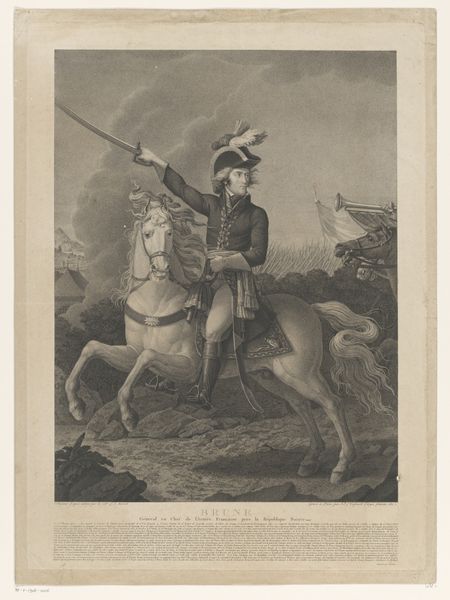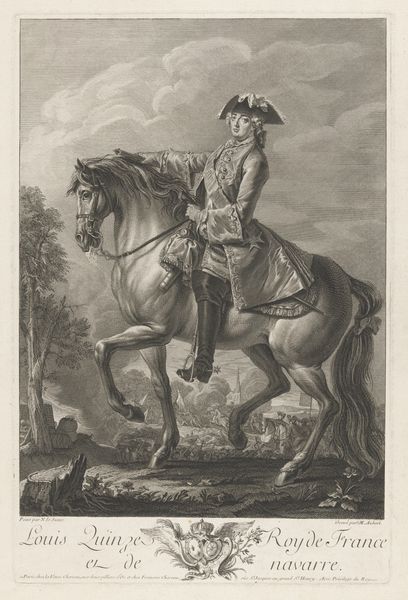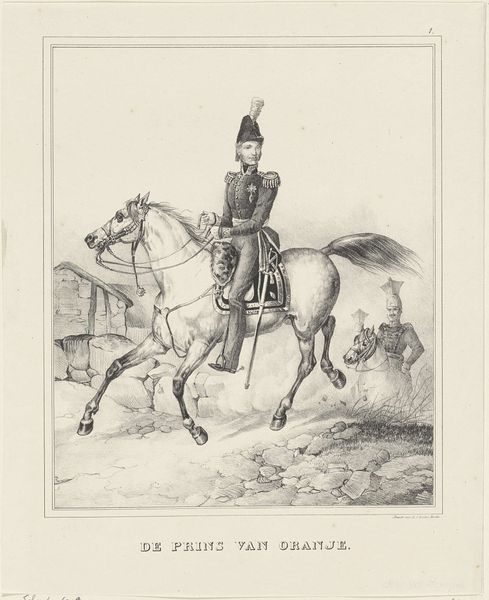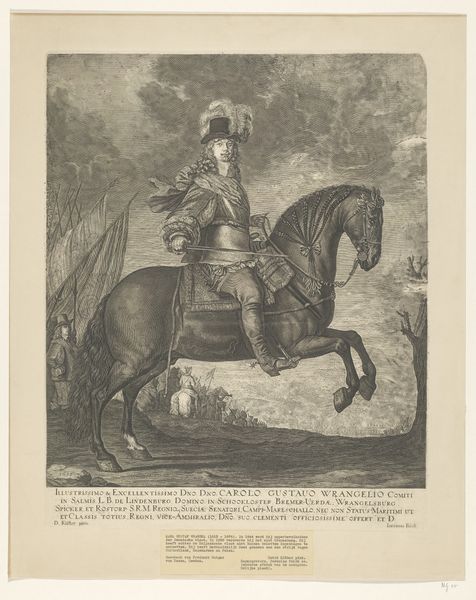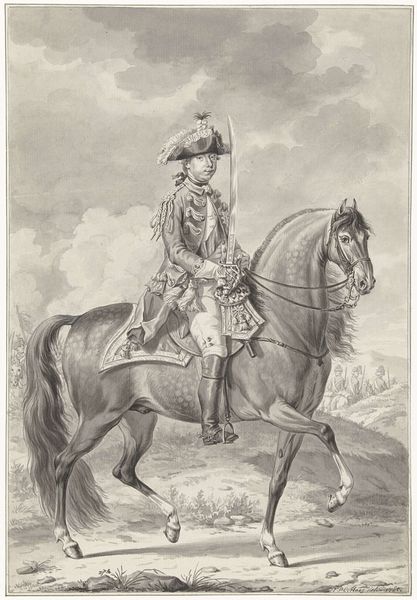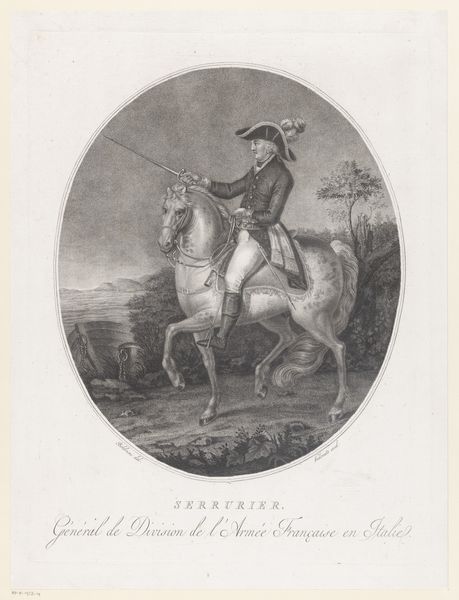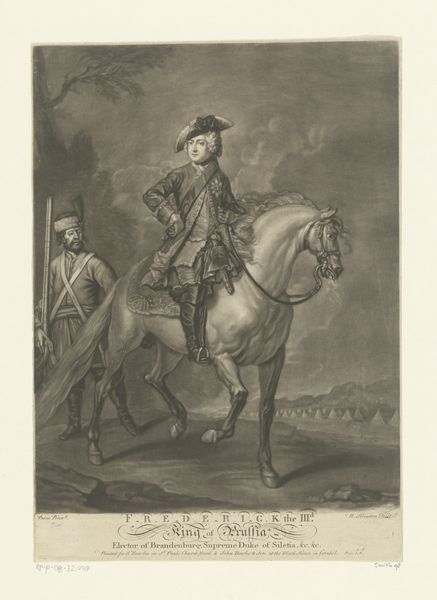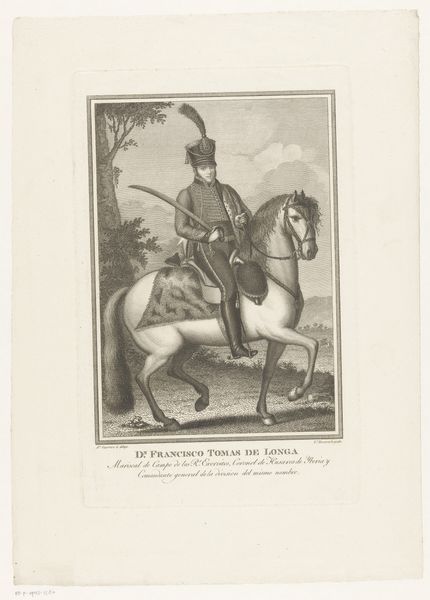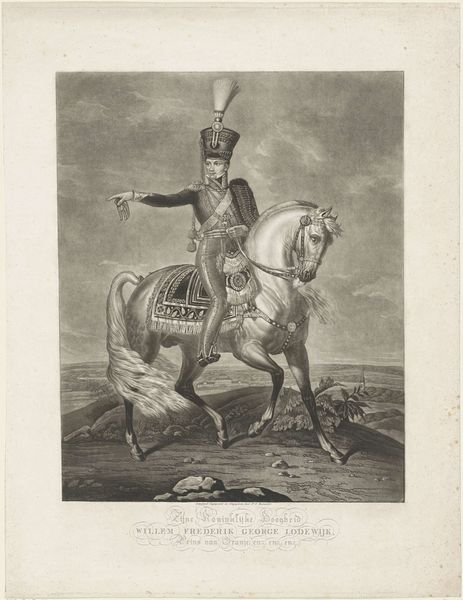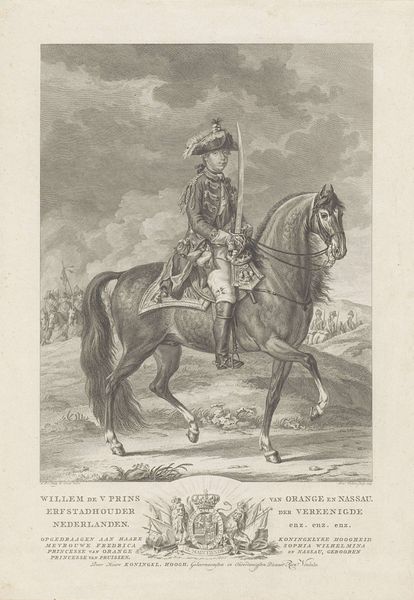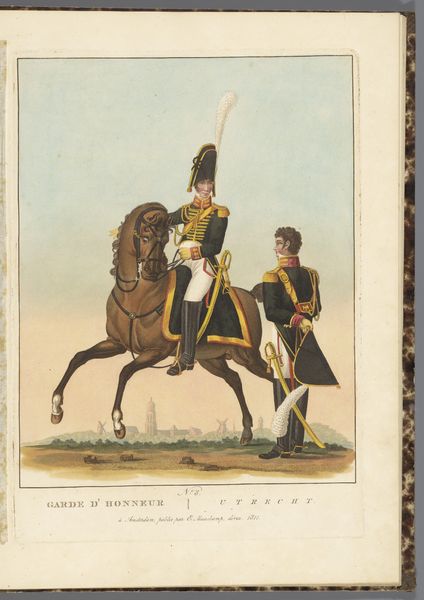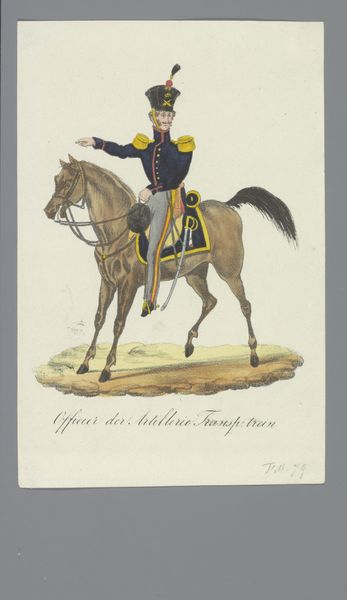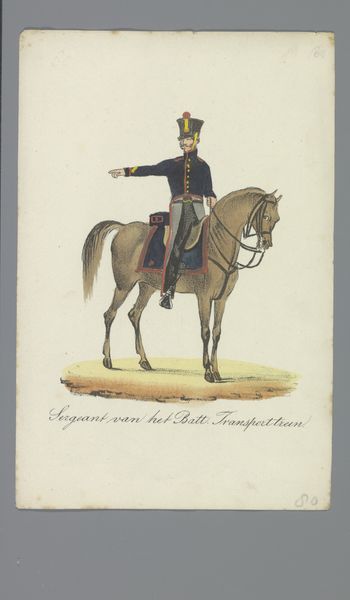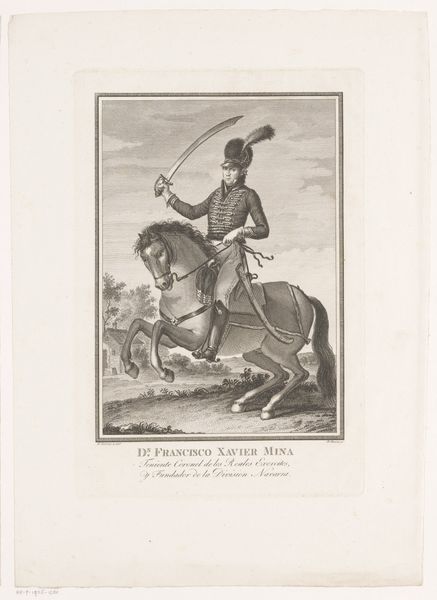
print, engraving
#
portrait
# print
#
landscape
#
framed image
#
19th century
#
history-painting
#
engraving
Dimensions: height 577 mm, width 443 mm
Copyright: Rijks Museum: Open Domain
This print of Frederick William III, King of Prussia, was made by J.C. Schall using a technique called lithography. Lithography is a printmaking process based on the simple principle that oil and water don't mix. The artist draws an image on a flat stone or metal plate with a greasy crayon. This surface is then treated with chemicals so that the image attracts ink, while the surrounding areas repel it. Paper is pressed against the surface, transferring the inked image. Think of this process in terms of labor. Lithography allowed for relatively quick reproduction, making images accessible to a wider audience. But it still required skilled hands - from the artist creating the initial drawing to the printer carefully inking and pressing each copy. The proliferation of lithographs in the 19th century reflects the changing relationship between art, labor, and consumption. It challenges notions of uniqueness and authorship, opening questions about value and access in the age of mechanical reproduction.
Comments
No comments
Be the first to comment and join the conversation on the ultimate creative platform.
